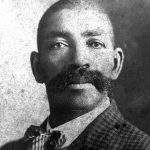Weekly Wrap Volume 126
 Why Are Some Pages “Intentionally Left Blank” and Why Do They Say This
Why Are Some Pages “Intentionally Left Blank” and Why Do They Say This
It’s easy to dismiss the phrase, “This page is intentionally left blank” and its usage as an example of bureaucracy gone mad, but it and the blank pages themselves are actually there for good reason. To begin with, the practise of marking intentionally blank pages, known as vacat pages, some form of “intentionally blank” goes all the way back to the dawn of automated printing itself, where mistakes in printing were relatively common. Like today, the main purpose of marking these pages in this way was simply to make sure people knew that the blank page wasn’t a result of a printing error. Given this, it’s no surprise that you’ll almost always only see this text on pages that you might otherwise think shouldn’t be blank given their position in the written work. This brings us around to the much more interesting question…(more)
While historians posit that the Wild West was nowhere near as wild as Hollywood would have you believe, it was a place where certain lawmen forged reputations as legendary heroes in their pursuit of outlaws. (Although in some cases, such as Wyatt Earp, the lawmen were little better than some of the criminals, see: Wyatt Earp – The Great American… Villain?) As for “The Indomitable Marshal” Bass Reeves, he was a former slave turned Deputy Marshal who captured some 3000 outlaws in his long and storied career. Born in 1838 somewhere in Arkansas, Reeves spent his childhood as the slave of State legislator William Steele Reeves. Little is known about Reeves’ youth and he seldom talked about it as an adult, but…(more)
 The Many Myths Surrounding the Pilgrims and Thanksgiving
The Many Myths Surrounding the Pilgrims and Thanksgiving
The myth that they dressed like this stems from a popular clothing style in England in the late 17th century, which carried over to 18th and 19th century artist depictions of Pilgrims. In fact, historical records of Pilgrims’ clothing, such as the passenger list of the Mayflower, wills, which included descriptions of clothing, and other such records, paint a very different picture than the late 17th century artists depicted. For starters, the Pilgrims didn’t wear buckled hats. They also didn’t wear buckles on their shoes or waists. Buckles were expensive and not in fashion at the time. They simply wore the much cheaper leather laces to tie up their shoes and hold up their pants. Buckles later became very popular in England for their expense and as a fashion statement. Those who were too poor to afford…(more)
This Week’s YouTube Videos (Click to Subscribe)
- To Boldly Go Where No Primate Has Gone Before
- Who is the “Fat Lady” and Why is It Over When She Sings?
- When Did We First Use Rubber Ducks?
- How Much Land do You Really Own Above and Below Your Property?
- Why is the Hottest Part of the Summer Called the Dog Days?
- The Parasite That Could Be Living Inside You Right Now: Toxoplasma Gondii
- How Did the Pet Rock Fad Start?
Bonus Quick Facts
- If you love the cult classic Monty Python and the Holy Grail, you partially have band members from Pink Floyd, Led Zeppelin, and Genesis, as well as Elton John, to thank for it, according to director Terry Gilliam. He stated, “There was no studio interference because there was no studio; none of them would give us any money. This was at the time income tax was running as high as 90%, so we turned to rock stars for finance…. They all had money, they knew our work and we seemed a good tax write-off. Except, of course we weren’t. It was like The Producers.” In total, the rock stars contributed approximately £80,000 (about £600,000 today) to the movie, or approximately 40% of its budget, with six other private investors footing the rest of the bill. The extreme low budget for the film ultimately resulted in some of its best gags. For instance, they originally planned to use actual horses in the film, but couldn’t afford it, so instead came up with the idea of having the actors act like they were riding horses while their assistants used coconuts to make clopping noises. In the end, the film, which wasn’t expected to do well, grossed £3 million (about £19 million today) at the box office off a budget of about £200,000, and has continued to earn well since in various home media incarnations, TV spots, and streaming online. Incidentally, Beatle George Harrison funded Monty Python’s next film, Life of Brian, to the tune of £3 million because he “wanted to see the movie”. The film ultimately brought in about £15 million or about £69 million today.
- In August of 2012, the National Art Museum of Ukraine held an “artistic” event where they had five beautiful women lay as if they were asleep. Men then signed up to kiss them. The women who signed up had to sign an agreement that if they opened their eyes while being kissed, they’d have to marry the man kissing them. Similarly, the men who did the kissing also had to sign such an agreement. None of the women opened their eyes, though one, 27 year old Natalya Bakovskaya, stated that she nearly did so for one of the kissers as his kiss was incredible. Afterwards, she stated she regretted not having had the courage to open her peepers… Probably for the best…
- The slinky was invented by accident when its creator, marine engineer Richard James, was working at a shipyard designing a device to measure horsepower output on naval battleships. The device required special springs for stabilization, one of which James accidentally knocked off his desk. It fell on a pile of stacked books and then continued on to the floor in slinky-like fashion. After playing around with it a bit, Richard thought this would make a good toy and got a loan to have several hundred slinkies made and packaged. He then managed to get his invention on the shelves of a local store… No one bought any for several days. Things changed when he went to the store and demonstrated the toy to people as they shopped, resulting in the whole stock selling out within two hours. And the rest, as they say, is history.
- The Brothers Grimm didn’t just write fairy tales, they also worked for many years on a German dictionary that not only included the definitions of the words, but also the origin of each word. As you might expect, this was a monumental undertaking for just two people who lacked Google. They did not manage to finish their dictionary before dying, but did publish excerpts of the work, with the first installment published in 1852, 14 years after they’d started it.
- There is a so-called Double-Nosed Andean Tiger Hound “breed” of dog (not officially recognized as a breed) that, as the name suggests, has a split nose. It’s generally thought that these dogs probably descend from the Pachón Navarro breed, which has a much less pronounced split nose. These were brought to the Americas by Spanish explorers sometime in the 16th century.
Other Interesting Stuff
 Why Swiss Cheese Has Holes In It
Why Swiss Cheese Has Holes In It
The holes come from a byproduct of some of the microbes added to milk to make Swiss cheese. Specifically, there are three primary types of bacteria that are typically used to make Swiss cheese (these can vary slightly depending on the manufacturer): Streptococcus thermophilus; Lactobacillus helveticus; and Propionibacterium shermanii. The first two types of microbes produce significant amounts of lactic acid, which is, in turn, consumed by the latter type of microbes, Propionibacterium shermanii. It is this Propionibacterium shermanii that is responsible for the holes in Swiss cheese. Through the process of consuming the lactic acid…(more)
 Peeling Back the Foil: The Origin of the TV Dinner
Peeling Back the Foil: The Origin of the TV Dinner
TV dinners weren’t officially created until the 1950s under that name, so before that time single guys, people that simply can’t or hate to cook, and harried moms had to find other ways to rustle up dinner in a hurry. It’s hard to imagine surviving in such primitive conditions, but our ancestors were a hearty bunch.Like many products that have enjoyed massive and steady popularity over the years, there’s a long line of folks who claim credit for the invention of the TV dinner. The evolution of the product began in 1941 when Maxson Food Systems Inc. produced the first ready to eat frozen meal. These dinners were called “Strato-Plates,” which were complete meals to be reheated and served to both civilian and military airline passengers. They consisted of meat, a potato and a vegetable, served on a plastic plate with three dividers. Unfortunately, because of…(more)
 7-Up Used to Contain Psychiatric Medication
7-Up Used to Contain Psychiatric Medication
The lemon-lime flavored soda, 7-UP was created by Charles Grigg of the Howdy Corporation in 1929 and first launched two weeks before the stock market crash that spurred the Great Depression… Timing! It was originally named “Bib-Label Lithiated Lemon-Lime Soda”, and included lithium citrate in its formula. Lithium citrate is a mood-stabilizing drug that was popular in the late 19th and early 20th centuries, and is still used sometimes today for people with bipolar disorder, among others. Many of the first sodas to be produced included drugs or metals and were often touted as health drinks. For instance, Coca Cola originally included coca leaves (hence contained a small amount of cocaine) in its formula and was intended to be a coca-wine cure-all…(more)
 Carrots Used to be Purple Before the 17th Century
Carrots Used to be Purple Before the 17th Century
The modern day orange carrot wasn’t cultivated until Dutch growers in the late 16th century took mutant strains of the purple carrot and gradually developed them into the sweet, plump, orange variety we have today. Before this, pretty much all carrots were purple with mutated versions occasionally popping up including yellow and white carrots. These were rarely cultivated and lacked the purple pigment anthocyanin. It is thought that the modern day orange carrot was developed by crossing the mutated yellow and white rooted carrots as well as varieties of wild carrots, which are quite distinct from cultivated varieties. Some think that the reason the orange carrot became so popular in the Netherlands was in tribute to the emblem of the House of Orange and the struggle for Dutch independence. This could be, but it also might…(more)
 Caffeine Does Not Stunt Your Growth
Caffeine Does Not Stunt Your Growth
We all remember being 12 years old and seeing your mom guzzling down her 3rd cup of coffee and really wanting some. When we asked if we could have a cup, the response was always the same: “No, caffeine will stunt your growth…” As if being tall was a necessary element in survival! It turns out though, that caffeine will not hinder you growing to NBA-like proportions. It isn’t known how this old wives’ tale came into societal acceptance. It probably gained some traction with numerous studies showing that drinking caffeine will increase the amount of calcium that gets excreted in your urine. Calcium is a necessary element for bone health. So it isn’t too farfetched to say because of this, adolescents shouldn’t drink it or they might inhibit the ability of their bodies to grow healthy bones. The problem with this idea is…(more)
| Share the Knowledge! |
|





